I recently shot a roll of Ilford HP5+ 120mm film using a beautiful Hasselblad 500c Medium Format SLR. Having only used a standard Pentax 35mm SLR a few times in the last few months, I was definitely concerned as to whether I would be able to use the camera – let alone get any good shots!
Getting to grips with the camera was initially frustrating, but eventually rewarding – learning how to use a light-meter, trying to fully understanding aperture, iso and shutter speed in order to use them to get the desired effect and loading the film were all hurdles along the way. The camera body is relatively bulky, quite heavy but not overwhelmingly so, yet I chose to use a tripod and a shutter release as I don’t have the steadiest of hands. Once I had set up an infinity background, controlled lighting and began positioning my objects I realised that the lens does not focus very close – I took a range of wide shots, rather than focusing upon/only capturing a particular area of interest. While I initially found this limiting due to not being able to get the sense of illusory/monumentality that I gained with a macro lens, it forced me to pay attention to the entire form – thus, as a result I gained a better understanding of what makes a successful, interesting lump. For example, a few pieces, despite having surface texture (carving marks, swellings and splices) which is desirable, the overall form was flat – literally flat, long and wide without a height. I found that I am not a fan of this lack of depth, and have since been making works which stand taller and rounder.
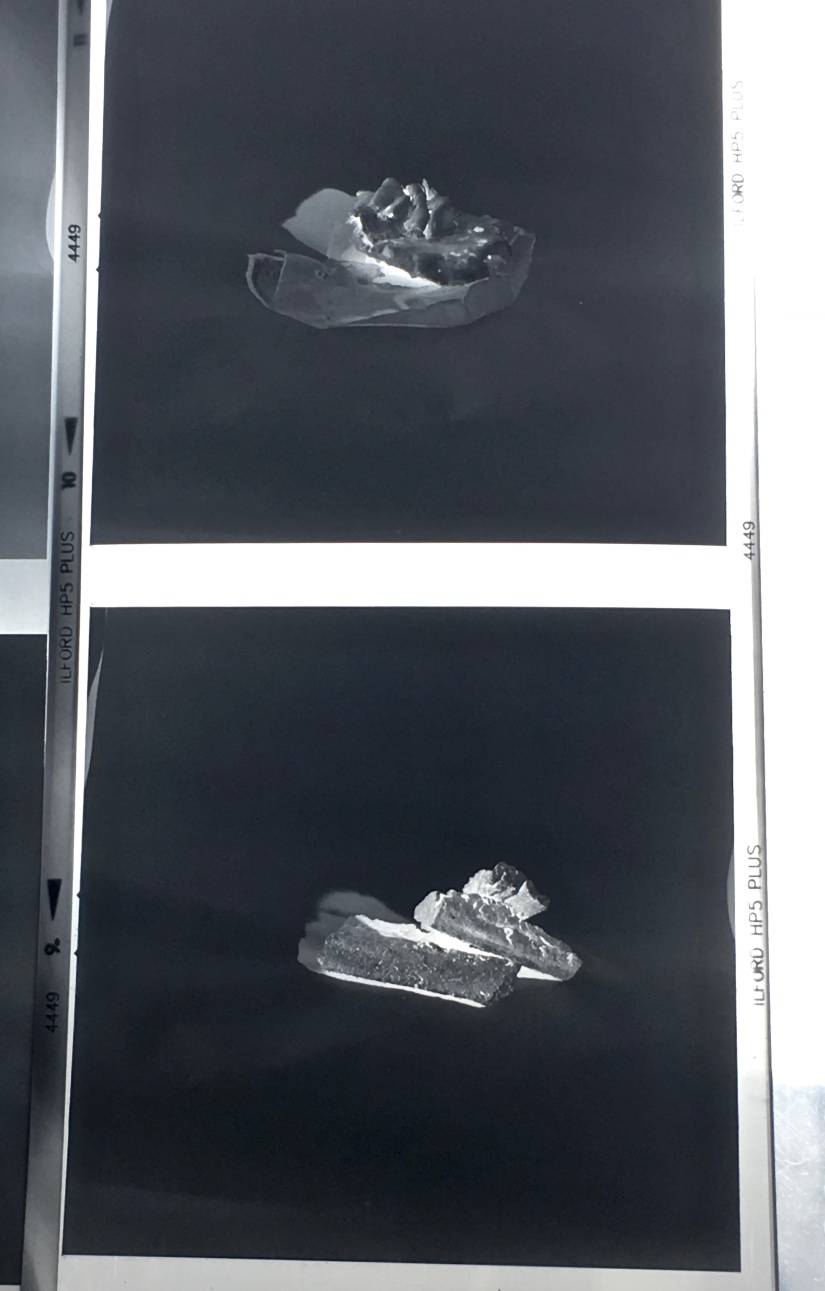
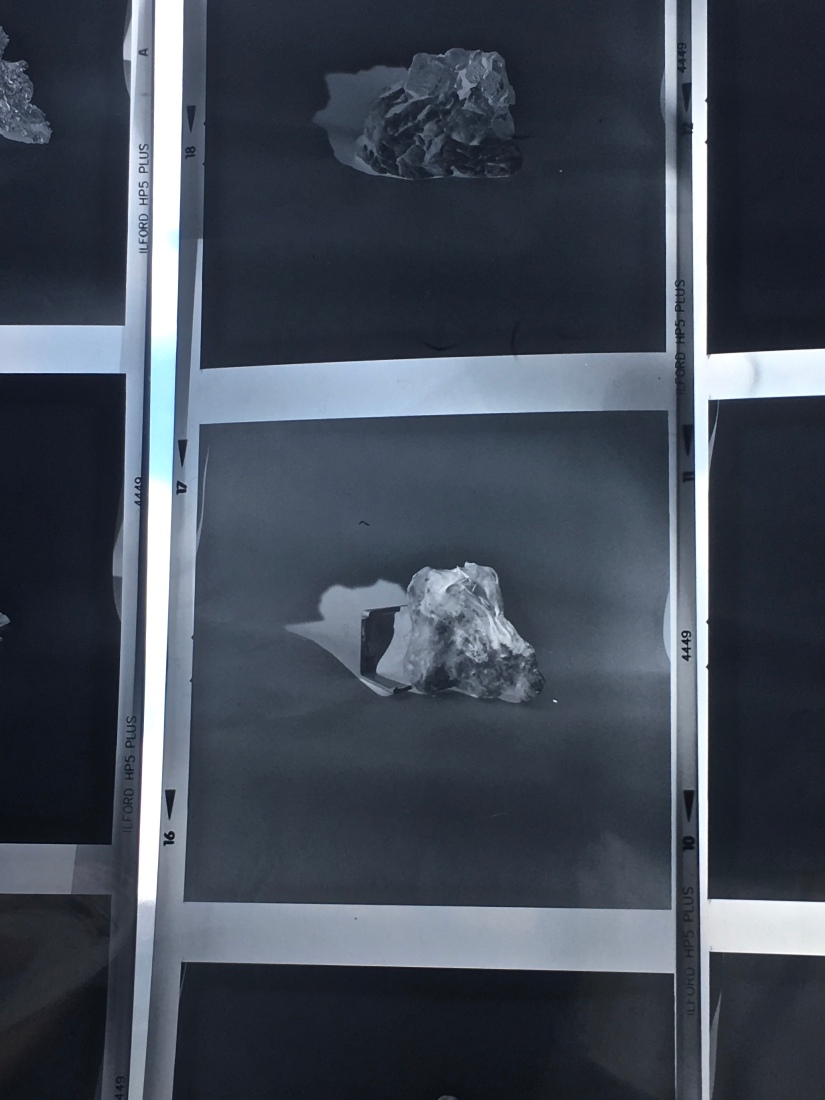
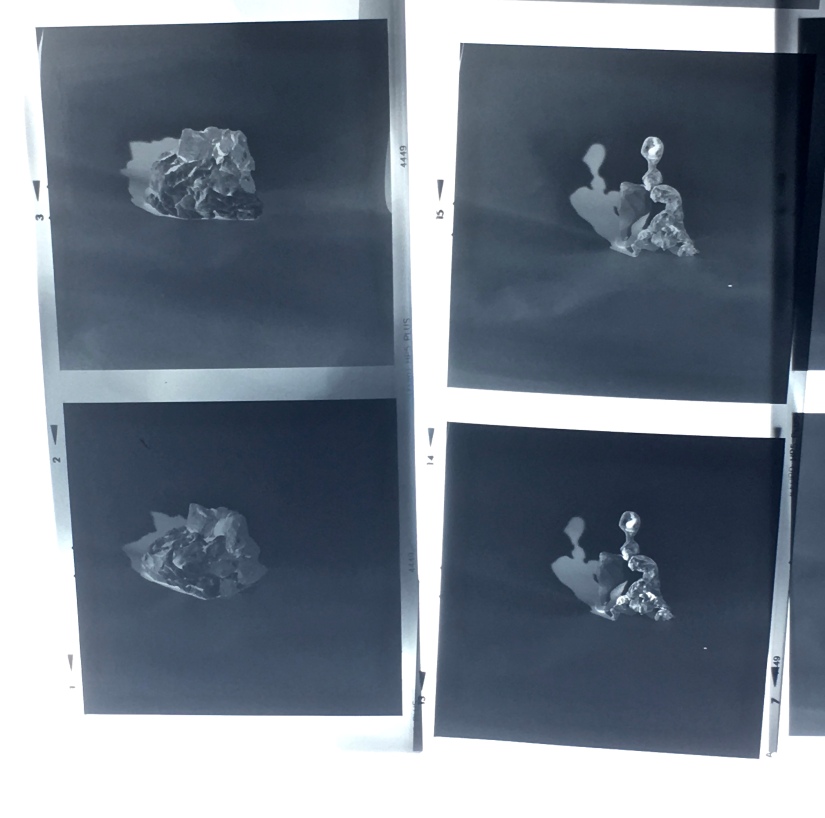
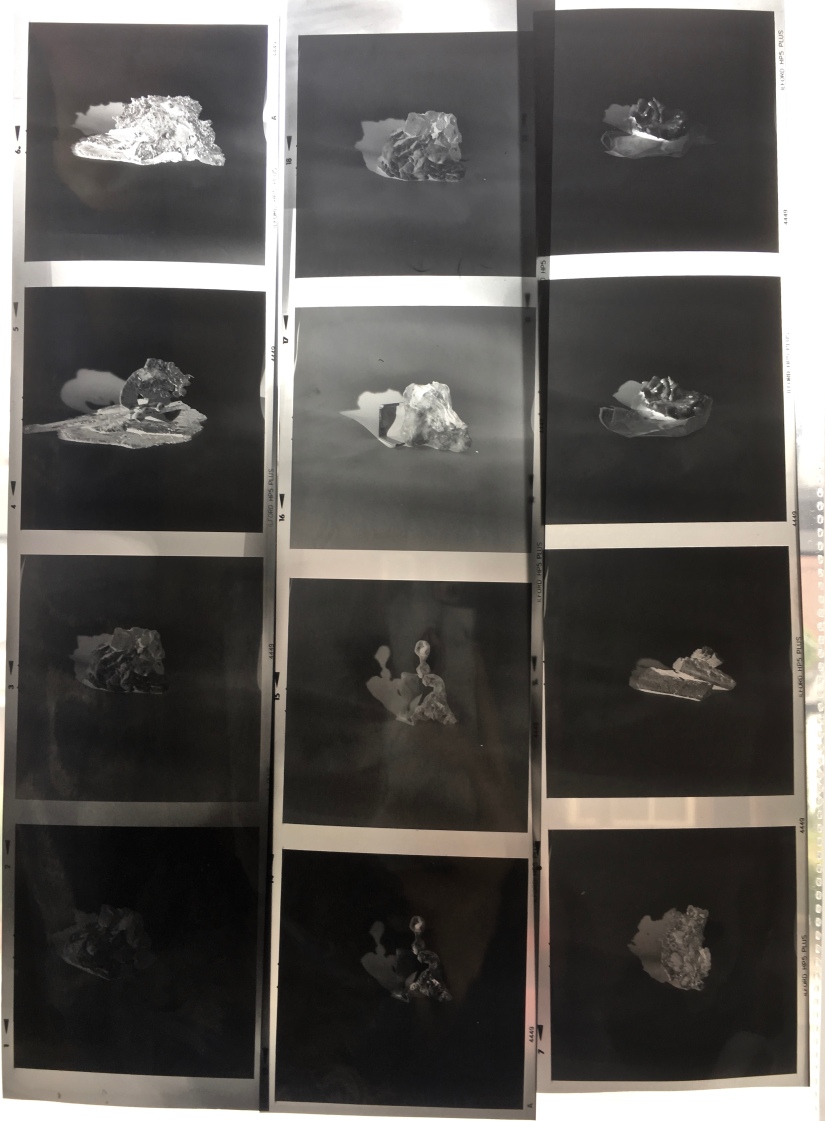
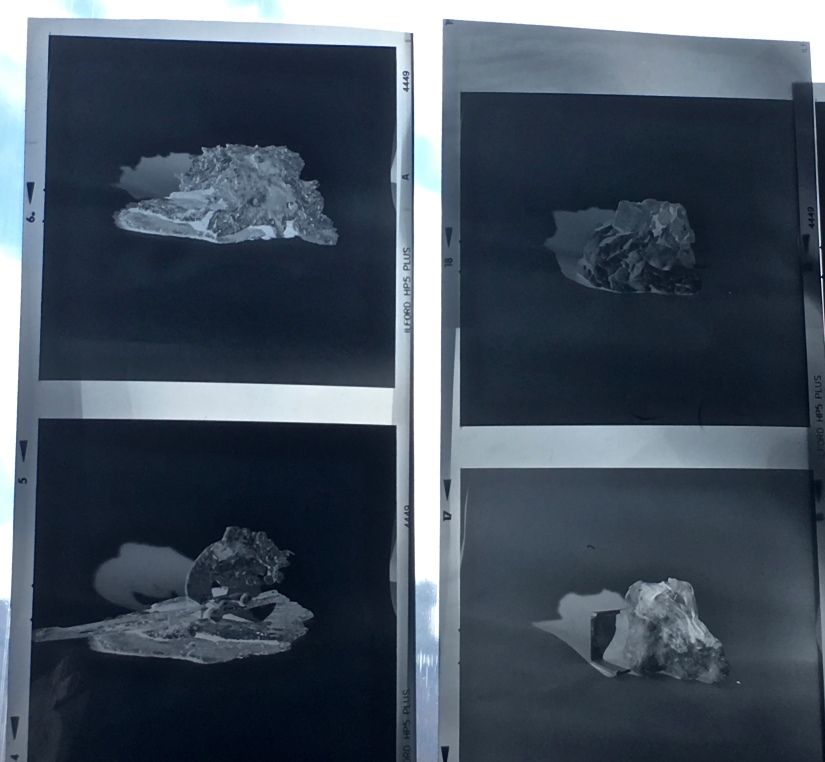
I’m not sure what I make of these negs, and with deadlines drawing in I won’t be processing them for a week or two. Nevertheless, the black&white, the grainy quality and the contract between light/dark lends itself well to my study of Lumphood and interest in archival images. With such images evoking ideas surrounding ‘old’ museum catalogues, I have began to question how items are categorised; what topographic mode, what motivations and what aims influence the sequence of catalogued images?
The very idea of cataloguing is of interest to me; a systematic list, a complete and comprehensive record – exhibition catalogues are a means of ‘understanding’, of explaining away the works, rendering them often with a singular meaning which is unquestionable and finite. At a surface level I certainly find exhibition catalogues helpful, (often stating details, dates, scale, material, context, etc.) yet fundamentally they can be a a bit drab. I’ve been flicking through Elizabeth Fisher’s book, ‘On Not Knowing’, which, countering the fervent urge to seek a final ‘answer’, is helpful in articulating the value and productivity of ‘not knowing’. I always panic that my work is not comprehensive – I often make work to think, and do not necessarily need to think to make. Of course I read books, research, watch documentaries/films, view art and examine technical processes – this is a key part of my practice but I do not embark on making a piece with a set, didactic ‘meaning’ or ‘idea’ which I want to inhabit the work. The process is fluid and experimental – full of questions with very few answers, and this is why I enjoy it! My investigation into what it means to be a lump does not and will not have an answer, that is not my aim. And so, with this in mind, I am quite scared to make a catalogue!!
A recent visit to Liverpool to speak with the curator of PRESENCE: A Window Into Chinese Contemporary Art, led me onto visiting the Open Eye Gallery. Here I picked up two small books only containing images: ‘Sit-in. Guildford School of Art 1968’, by John Walmsley and ‘Revisiting Utopia: Modernist Architecture in the Post-regenerate City’, by Craig Atkinson. I am not so much interested in meaning, rather simply the quality of the prints is very pleasing. Despite depicting highly politicised instances or bulky infrastructure, the black and white images captured a quality which I hoped to mimic with my Hasselblad attempt; the variation of very sharp, crisp lines and high contract with others being soft and more homogeneous in tone. In the April 2018 edition of Black and White Photography, Alex Schneideman discusses the endurance and sudden resurgence of film photography; ‘In the last couple of years we have seen a 200% increase in the number of rolls of film we are processing’. He expresses that:
‘For these photographers who enjoy the quality of film […] they love that they get a physical rendition of the light they experienced at the time of exposure. They love the grain that tells that story of the chemistry that has made their image. They love that the exposure is wrong. And for this new understanding of photography we have digital to thank. For how else could we have been forced to re-evaluate film…’ p.51
These borderline romantic notions surrounding film photography does become slightly dreary, but I cannot deny that I do find the process more rewarding than using digital.
In line with these thoughts, the current exhibition at Liverpool’s open eye gallery displays a series from Beijing Silvermine – an archive of half a million negatives salvaged over the last seven years from a recycling plant on the edge of Beijing, assembled by the French collector and artist Thomas Sauvin. The process of reclaiming, scanning the negatives and cataloguing them provides insight into an entirely different laborious process regarding film negatives. Moreover, the emphasis upon found materials resonates strongly with my interest in waste which forms the basis of my lumphood study.





